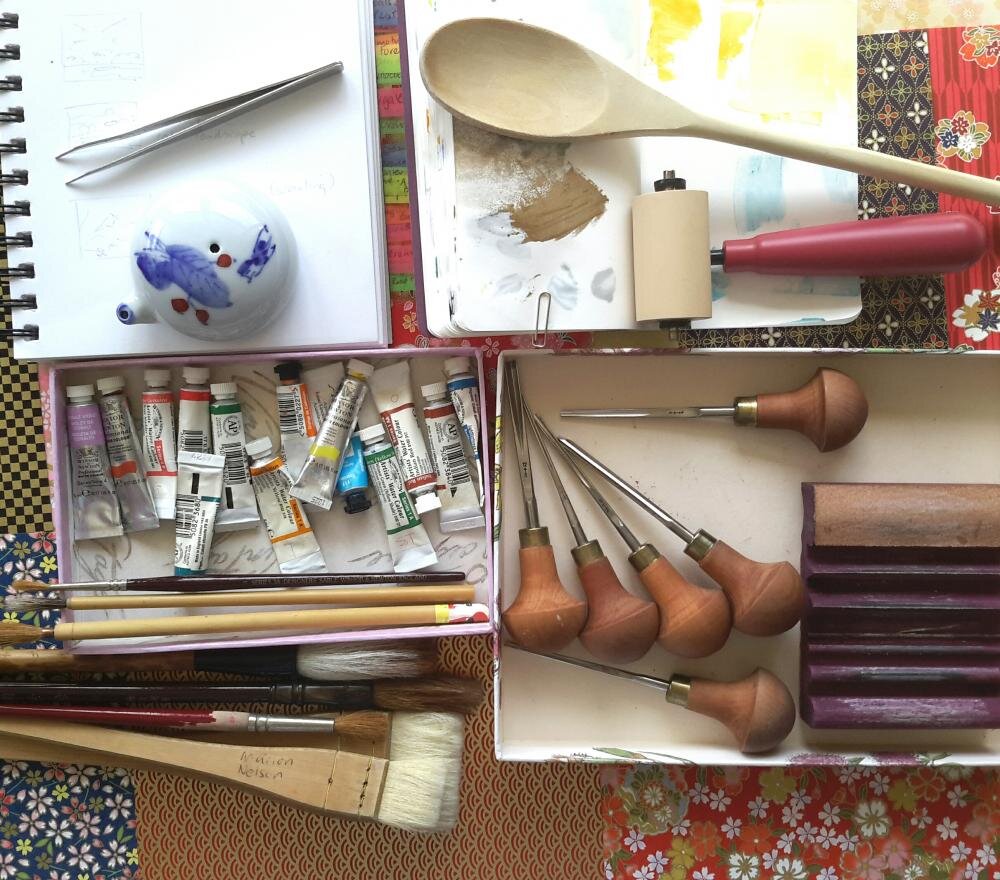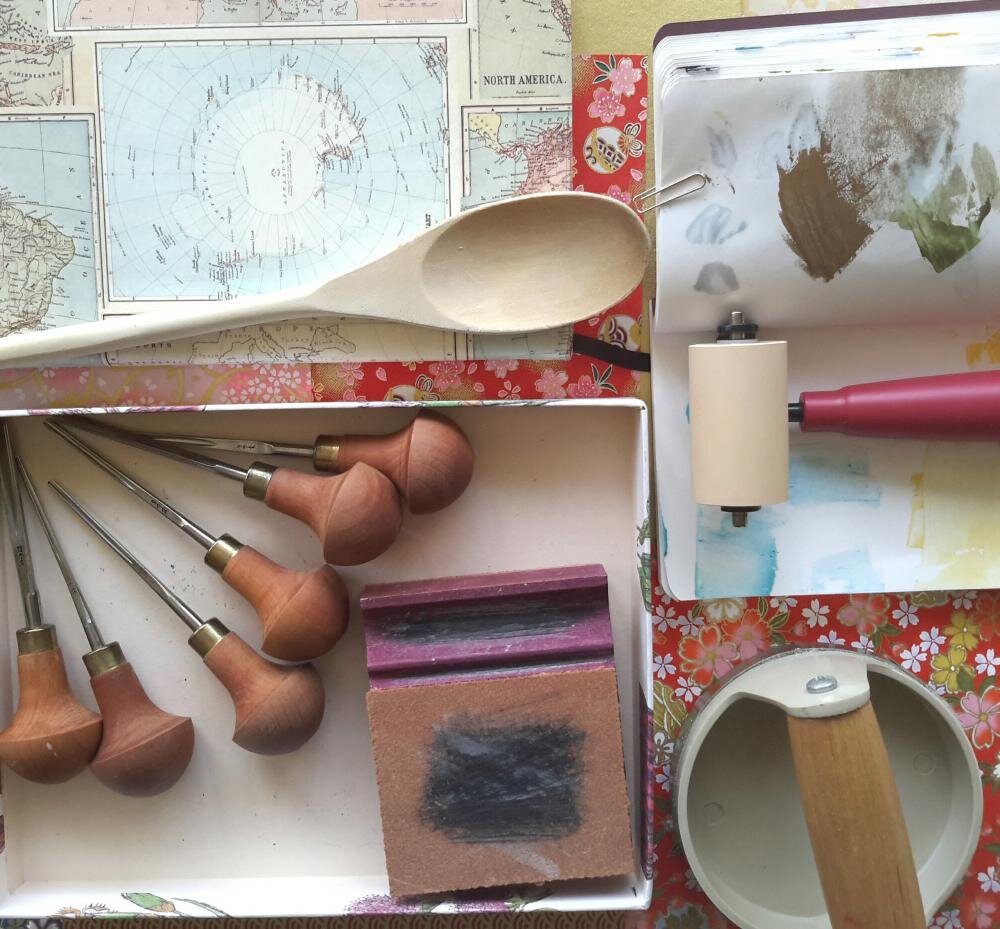
Process and Resources
An introduction to my creative process and a list of tools and materials used regularly in the studio.
Process
In printmaking, I usually work from a sketch and would improvise as I go because I like to draw and paint directly on the lino plate. Most of my linocut prints are created by reduction. Ink is rolled on the plate and the image is transferred by placing the paper on the plate and rubbing the back of the paper with a baren. I like to work from light to dark, and will often print the same scene several times to get the intensity I’m looking for, letting each layer dry in between. In reduction printmaking, the colour to be kept is cut away and the process is repeated until the last colour is printed. The plate is destroyed in the process and no more prints can be taken thereafter. The process is time consuming and it is usual for each finished linocut artwork to have 10-20 layers of ink.
I like to combine mono-print with watercolour painting. I find abstract ink marks on paper very sensual and they have stories to tell. These marks are taken from ink on a plate. When the ink on paper is dry, watercolour washes are layered and the painting evolve and dictate the finished result.
I enjoy working with paper; printmaking paper, watercolour paper and especially exquisite origami paper. It takes 24 folds to make a crane. The act of folding is a study in meditation and mindfulness.
Tools and Materials
We get questions about tools and materials. So here is a list of everything used most regularly in the studio. These are solely personal preferences based on experience, and are written with no regard to any affiliation.
PRINTMAKING
Gouges – I use a set of Pfeil C of 6 cutting tools which include 4 U-shapes and 2 V-shape of various sizes, plus an extra very small v-shape tool. They are a bit expensive but well worth the price. They have a pear shaped wooden handle that sits comfortably in the palm of your hand whilst you work with it. The steel metal parts are sharpened into great cutting edges. I maintain my tools by constantly sharpening with a Flexicut SlipStrop and polishing compound.
Carving Blocks I use Battleship Gray Linoleum which I buy in rolls and cut to size. I like to mount the lino on wood or MDF to make it lie flat and easier to handle. It has a subtle texture that shows in your work by how much ink is used and how much pressure is used to transfer the print. You need sharp tools for working with this material!
Ink I use Speedball’s Professional oil-based relief printing ink as it provides excellent coverage and viscosity and is easy to clean with water. I have recently added some Caligo (Cranfield) ink; they come in traditional and safe wash.
Brayer I have a few soft rubber Speedball brayers and they come in 2”, 4” and 6”. The big ones can cover a block quickly but small ones are great for adding details. I use them like a ‘paint brush’ sometimes!
Baren I print all my work by hand using a Speedball baren which has a smooth padded surface to glide over the paper and a nice wooden handle to hold. It helps to apply even pressure. I still use a wooden spoon when I want to get a bit of extra detail!
Paper for printmaking Fabriano papers are my choice – Artistico Santinato and Rosaspina. The Artistico Santinato is particularly suited for mixed media in combining monoprint and watercolour. I also use Awagami Washi. I usually buy my paper from Neil Wallace in Melbourne.
PAINTING
Paints - I use Windsor and Newton artist watercolour and I love the quality pigment. I also enjoy Chinese ink and like the feel of this oily ink and its many subtle nuances.
Brushes - I have a selection of “go-to” brushes; a couple of hake goat hair brushes for washes, chinese painting brushes of various sizes, a few small sable hair brushes, and a couple of old brushes worn down to a few sparse hairs that I just can’t do without!
Paper - I prefer to use mulberry paper for my Chinese ink paintings and Fabriano or Arches paper for watercolour painting.
ORIGAMI
Paper - I found Ozu Washi when I was in Tokyo one year and was impressed with the selection of paper and good service. The shop has been supplying paper since 1653. This is where I buy most of my origami and ink painting paper.
Tool - As I fold very small cranes using paper as small as 3cm square, I can’t do without my trusty pair of tweezers!


